CarbonDioxide
Latest
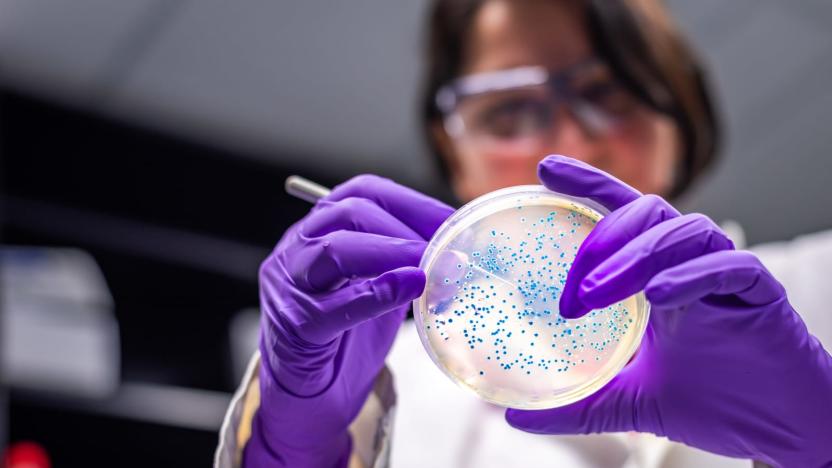
Researchers develop E. coli strain that 'eats' carbon-dioxide
While you're stuffing turkey leftovers in your belly, the last thing you want to think about is E. coli. But spare a thought for the bacterium, it's not always here to harm you (and it needs to eat, too). According to a new paper published in Cell, scientists have developed a strain of E. coli that feeds on carbon dioxide. As Nature explains, the bacteria usually prefer sugars (glucose), but the lab-created strain could be used to create biofuels with a lower emissions footprint than conventional production methods.

These robotic 'trees' can turn CO2 into concrete
Climate change is killing our planet. The excess production of carbon dioxide and other greenhouse gasses are filling the atmosphere and warming the Earth faster than natural processes can effectively negate them. Since 1951, the surface temperature has risen by 0.8 degrees C, with no sign of slowing. So now it's time for humans to step in and rectify the problem they created -- by using technology to suck excess CO2 straight from the air.

NASA's public CO2 challenge could help astronauts endure on Mars
NASA would really prefer that Mars astronauts produce their materials on Mars, but that's not so easy when resources we take for granted on Earth are hard to get on the Red Planet. The administration has an idea as to how it might accomplish that feat, though -- and it wants your help. It's launching a CO2 Conversion Challenge that asks the public to find ways to turn carbon dioxide into compounds that would be useful on Mars, where the substance is plentiful.

Unearthing oxygen-starved bacteria might worsen climate change
A recently-released federal report has finally credited humans with causing climate change, but we might have more to worry about than fossil fuel emissions. While we knew bacteria in earth's soil releases almost a third of the carbon dioxide that reaches the atmosphere every year, a portion of this population has gone overlooked. A new study has found that bacteria which don't require oxygen to produce CO2 occur in more areas than previously thought. And while its production is far lower than normal (aerobic) processes, that rate will likely increase if the surrounding soil was exposed to air or when the global climate warms up.
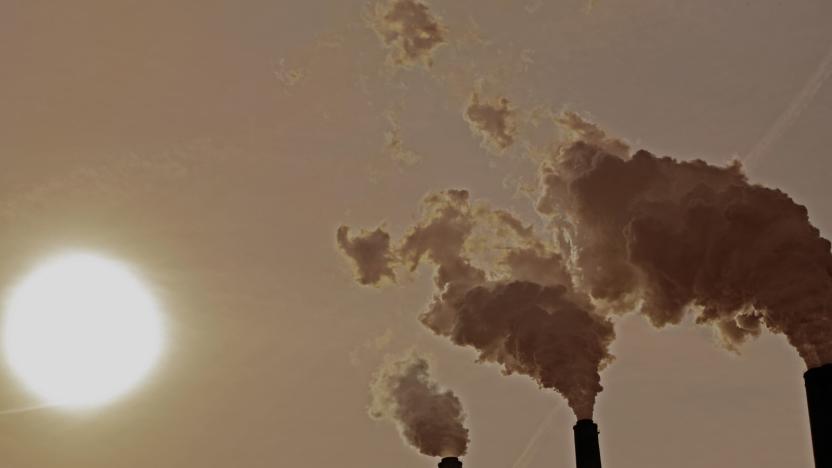
Scientists can't explain a 'worrying' rise in methane levels
The amount of CO2 in the atmosphere reached a record high in 2016, according to the World Meteorological Organization (WMO). Thanks to a combination of human activities and the El Nino weather event, last year's increase was 50% higher than the yearly average from the past decade, driving CO2 to a level that's not been seen for 800,000 years. Average levels in 2016 reached 403.3 parts per million, up from 400 parts per million in 2015.

Scientists find cleaner, more efficient way to turn CO2 into fuel
Conventional fuel aren't going away just yet, but that doesn't mean you can't produce them in a more responsible way... and scientists might have found that way. They've developed a process that can convert CO2 into carbon monoxide (and subsequently into fuel) using solar energy with nearly flawless selection -- that is, you can get the material you want virtually every time. The trick was to create a spongy nickel-organic photocatalyst that purposefully includes a lot of defects, letting it produce adequate amounts of carbon monoxide without creating surprise molecules.

House science chairman thinks climate change is 'beneficial'
Forget the piles of peer-reviewed research accumulated by scientists over decades, climate change is actually great news for mankind. Or so says Texas Rep. Lamar Smith, the Republican head of the House Committee on Science, Space and Technology. In a baffling editorial titled "Don't Believe the Hysteria Over Carbon Dioxide", Smith complains that Americans are being brainwashed by "alarmists' claims" (read: scientific consensus) and urges readers to consider the many perks of atmospheric armageddon. For example, churning carbon dioxide into the environment is no biggie because plants love the stuff. "A higher concentration of carbon dioxide in our atmosphere would aid photosynthesis, which in turn contributes to increased plant growth. This correlates to a greater volume of food production and better quality food," Smith writes, referencing uncited "studies" while ignoring reams of research that show any benefit would be canceled out by other climate factors, such as drought and temperature increases.
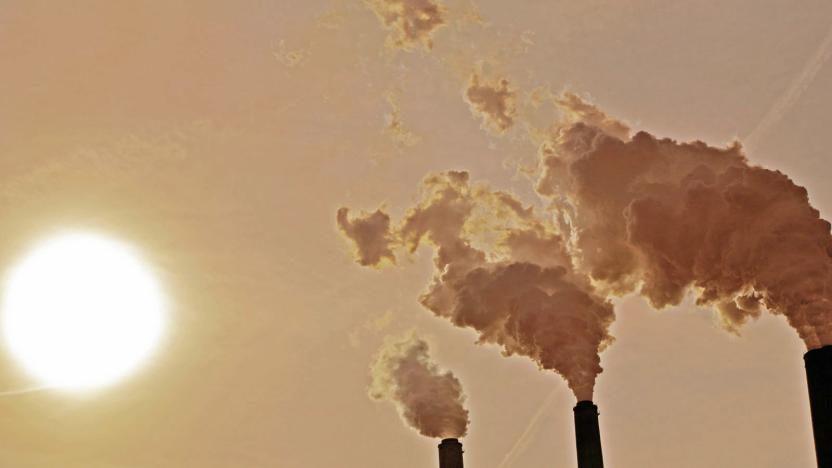
Scientists: Suck CO2 out of atmosphere or face the consequences
We need to start removing carbon dioxide from the atmosphere as soon as possible. If we don't, future generations will have to choose between biblical weather events or spending trillions of dollars trying to avoid them. This is the grim prognosis from an international team of researchers led by former NASA climate science chief, Professor Jim Hansen. Speaking to the Independent about the team's latest research, Hansen said the "shit is hitting the fan" in terms of current climate change progress.

Dear Donald Trump: 'Clean coal' doesn't exist
"Clean coal" is an oxymoron. Even if you took a hunk of coal, doused it in bleach and scrubbed it for six hours with a soapy horsehair brush, it would still cause lung cancer and fill the air with carbon emissions when you burned it. Anyone who says otherwise is lying. However, the phrase "clean coal" is ridiculously tenacious in public discourse. Just this week, President Donald Trump used it: As he signed an executive order rolling back a bevvy of environmental protections laid out under the Clean Power Plan, he turned to the coal miners staged around his desk and promised to "end the war on coal and have clean coal, really clean coal." The president of the United States is lying.
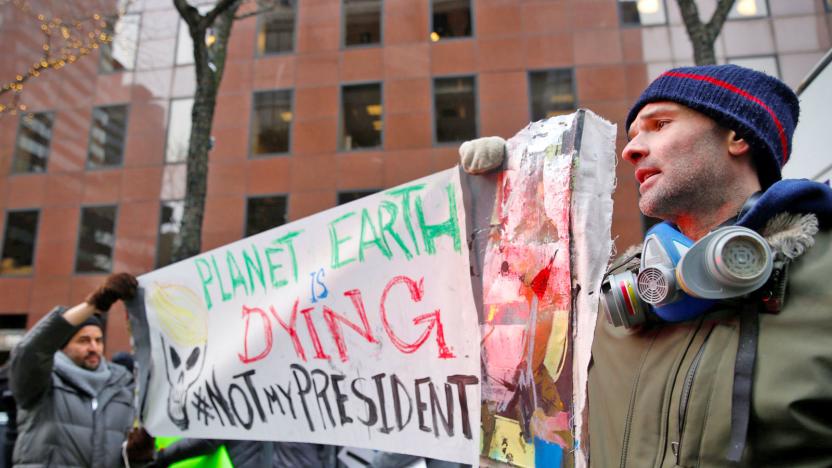
What Trump's budget would mean for NASA and climate change
President Donald Trump's proposed 2018 budget beefs up the Defense Department while removing funds from the Environmental Protection Agency, Department of Energy, NASA and many other government agencies. Congress still has to pass the budget, but if it's approved it will shut down a handful of programs designed to research and combat climate change. Despite overwhelming consensus in the scientific community, multiple members of the Trump administration have argued that climate change is not a man-made occurrence, including new EPA head Scott Pruitt. So, it's not surprising that Trump's proposed budget slashes climate change research programs and funding -- but it is concerning.
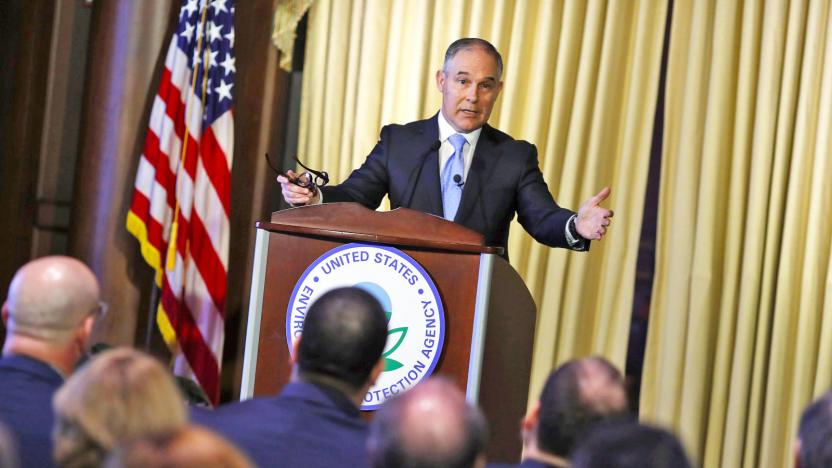
EPA head suggests CO2 isn't a 'primary contributor' to climate change
If you want a good example of why American environmental scientists are in such a state of despair these days, you just got it. When asked by CNBC whether or not he thought carbon dioxide was the "primary control knob" for global warming, new EPA chief Scott Pruitt suggested that it wasn't a "primary contributor." The answer is a bit fuzzy (it's merged with a broader attempt to cast doubt on the human role in climate change), but it's still far from flattering -- either he's trying to downplay basic climate science for the sake of his fossil fuel industry friends, or he genuinely doesn't know how it works.
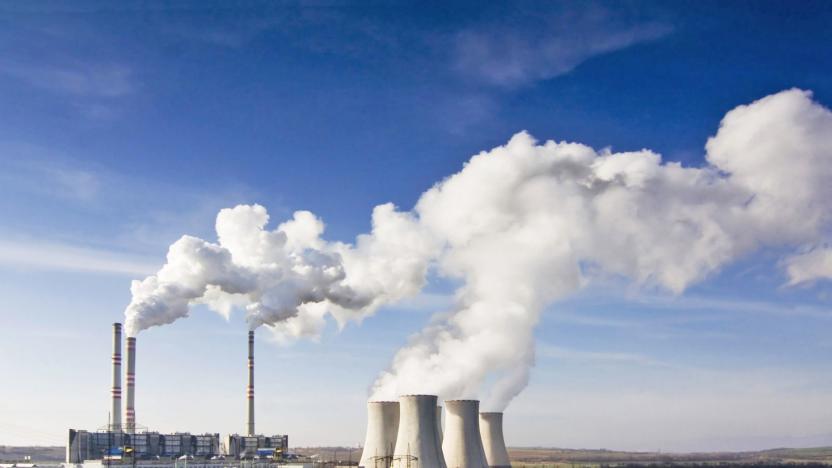
Scientists make battery that runs on air and carbon dioxide
Researchers at Penn State University have potentially come up with yet another way we could create energy from all that nasty carbon dioxide we pump into the atmosphere. They've developed an inexpensive flow cell battery that uses mostly water solutions containing either dissolved CO2 or dissolved normal air -- the technical name for the dissolving process is called sparging, just FYI. Because the liquids contain different concentrations of CO2, they have different pH levels, and it's this imbalance that generates electricity.

ICYMI: Hairy robots are better than smooth
try{document.getElementById("aol-cms-player-1").style.display="none";}catch(e){}Today on In Case You Missed It: Roboticists from China created an artificial skin for robots that simulate hair with glass-shrouded microwires. A gripper hand with the 'hair' on it's skin was able to feel when an object was slipping because of the hair, then adjust its grip. Lets just hope they keep the full Teenwolf under control. The helium-filled balloon bot designed for search and inspection jobs is here. Meanwhile NASA is spending its final days of 2016 by releasing data visualizations of carbon dioxide pollution around the globe, and how extra heat is stored in the world's oceans. The Chuck E. Cheese challenge video is here and that awkward handshake, here. As always, please share any interesting tech or science videos you find by using the #ICYMI hashtag on Twitter for @mskerryd.

This is how carbon dioxide moves around the world
NASA likes studying and illustrating the effects carbon dioxide has on our planet. It's kind of a hobby for the organization. And now the aeronautics association has a new model for how greenhouse gases move through the atmosphere. It's thanks in part to the Global Modeling and Assimilation Office from the Goddard Space Flight Center, combined with data from from the Orbiting Carbon Observatory-2, chronicling the movement of CO2 from September 2014 through September 2015.

Methane emissions spike with dangerous climate consequences
If you thought that the only greenhouse gas worth panicking over was carbon dioxide, then you're gonna need a lie down. Methane, the Art Garfunkel / Luigi to CO2's Paul Simon / Mario (delete as appropriate) is on a mission to wreck our planet. A global team of researchers have found that global methane emissions are spiking, which has even more depressing consequences for our fragile environment.
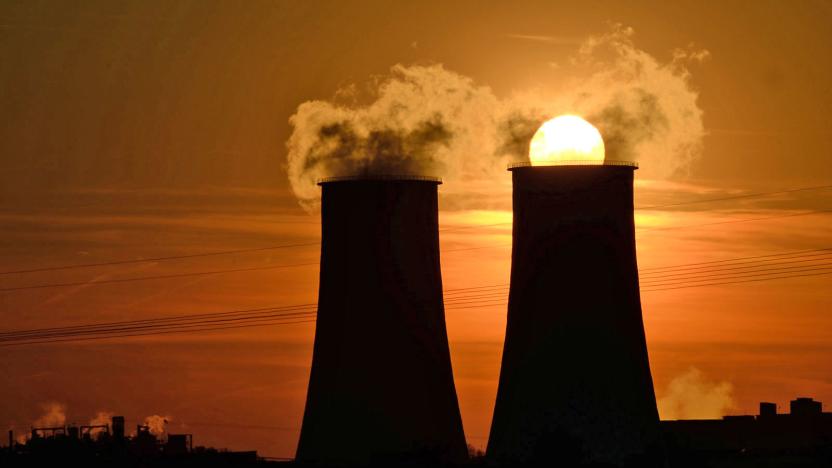
Researchers find a new way to convert heat into electricity
When we think about ways to make existing power plants more efficient, we typically look at waste heat. It's something almost everything generates -- coal plants, automobiles and even your refrigerator loses a sizeable amount of energy to lost heat. Capturing and using this heat to generate electricity with can save money and reduce fossil fuel consumption, but capturing power from that heat has always been a challenge. Now, researchers have created a new material that could represent a major step forward in thermoelectric electricity production.

ICYMI: Getting ethanol from more than just corn
try{document.getElementById("aol-cms-player-1").style.display="none";}catch(e){}Today on In Case You Missed It: Researchers at the Oak Ridge National Laboratory created ethanol out of carbon dioxide in a way that they believe would be easy to scale up. Most importantly, the conversion happens at room temperature so it could be done nearly anywhere in the world. We are also tickled by this stop-motion music video for a new song by Dan Sultan, and enjoy the dress designer who wants to put alcohol in clothes. As always, please share any interesting tech or science videos you find by using the #ICYMI hashtag on Twitter for @mskerryd.

Researchers accidentally turn carbon dioxide into ethanol
Science has a long and storied history of looking for one thing but finding something better instead. Penicillin, radioactivity, science boxes...I mean microwave ovens -- all of these discoveries came in the the search for something else. On Monday, researchers at the Oak Ridge National Laboratory in Tennessee announced that they too had unintentionally discovered something incredible: a means of transforming carbon dioxide directly into ethanol using a single catalyst.
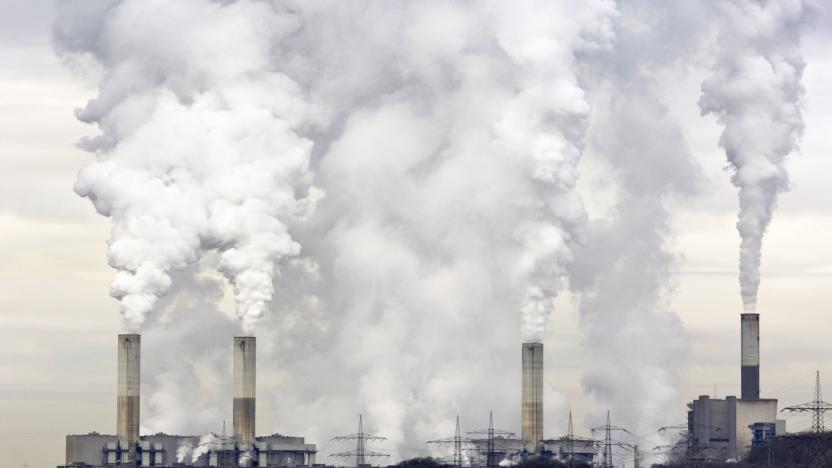
Carbon Xprize chooses the 27 best solutions for CO2 emissions
Twenty-eight teams made it through the $20 million NRG COSIA Carbon Xprize's first round. Now, they have to start proving that they can truly transform a meaningful amount of carbon dioxide emissions into useful products. The semi-finalists from various universities, startups, big companies and non-profits all over the globe will do a test run of their technology over a ten-month period. Judges will look at how much CO2 they can convert, as well as the value of their products.
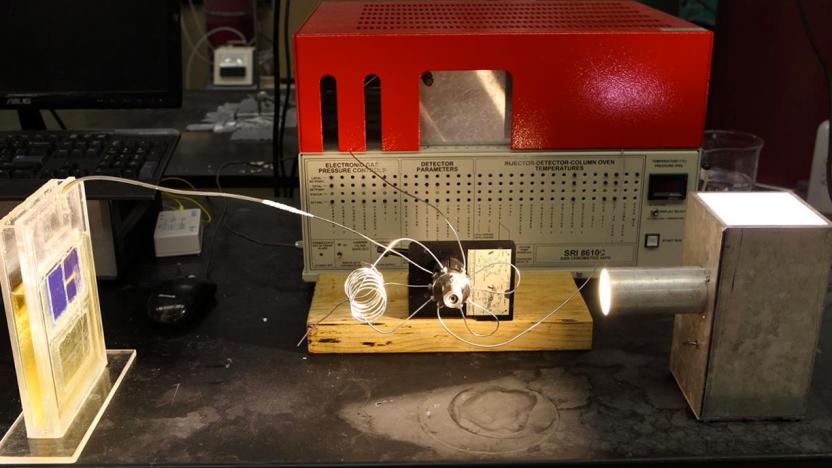
Scientists turn CO2 into fuel with solar power
Researchers at the University of Illinois at Chicago believe that they've perfected the art of photosynthetic solar cells. It's a technology that mimics a plant's ability to inhale carbon dioxide and, with water, convert it into glucose and oxygen. This system is capable of drawing in carbon dioxide and processing it into a synthetic fuel that could be used to power vehicles. Theoretically, this device could create a virtuous cycle where climate-altering carbon could be removed from the atmosphere and pumped back into cars.











